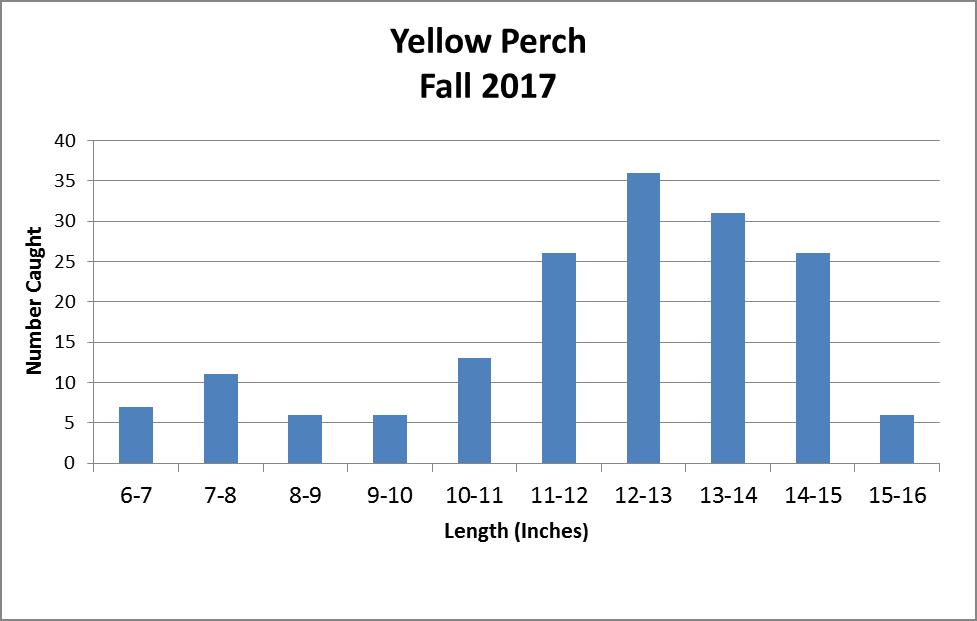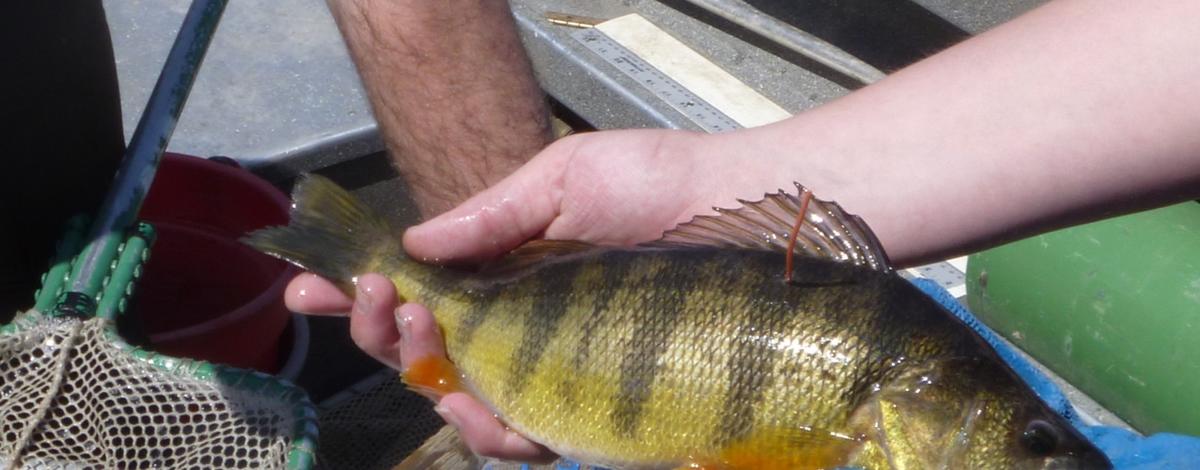Since 2012, Fish and Game fisheries staff in McCall has annually conducted fall fishery surveys on Lake Cascade. We sample all fish populations in the lake, which helps manage all game fish in the reservoir.
So what did we find in our 2017 survey?
Lots of big perch
The perch population looks healthy. All ages of fish are present in the lake, and there's still a large number of perch over 12 inches. Of all the perch we caught in nets 59 percent were over 12 inches.

We have seen a decline in perch less than 11 inches in both 2016 and 2017 surveys. This is a result of predation on small perch by the large numbers of big perch and also pikeminnow, smallmouth bass, rainbow trout and birds. If this trend continues, it will mean fewer jumbo perch in the future.
One of the primary food items for perch are juvenile perch and large numbers of big perch can have a huge effect on juvenile perch numbers as most get eaten. The good news is that as the large group of big perch decline, it allows for large numbers of small perch to survive and become the next generation of jumbos. Perch grow 1.5 to 2 inches a year, thus 12-inch fish are six to seven years old and 14 inch and larger perch are eight to 12 years old.
As a result of Fish and Game's continued pikeminnow removal efforts their numbers have remained steady since 2012. However, in this years’ survey, the percentage of adult pikeminnow increased. This is expected as young pikeminnow that are not killed in traps or by chemical treatment grow in size. This illustrates the need for continued adult pikeminnow removal to protect the perch fishery.
Rainbows and smallmouths
We saw good numbers of rainbow trout in the fall 2017 survey ranging from 12 to 21 inches with most in the 12 to 17 inch range. However, we didn’t see as many rainbows over 17 inches than we have in the past.

We collected a number of 10 to 20-inch smallmouth bass with half of those larger than 16 inches. Trends in juvenile bass are unknown because our nets are not designed to collect those small fish.
Annual fish surveys are vital to managing Lake Cascade, which is the fourth-largest body of water in Idaho, contains many fish species and is a popular spot for anglers.
Managing for the future
The lake’s rainbow trout and kokanee fisheries are a direct result of annual stockings, and smallmouth bass are a self-sustaining population that we watch, but only manage with rule changes.
Yellow perch management is much more hands on and depends on the control of northern pikeminnow numbers. Therefore, of particular interest to managers is the status of the perch and pikeminnow populations.
We closely monitor perch population and fish sizes to ensure there are abundant perch over 9 inches, which cannot be eaten by pikeminnow, so they’re important for spawning and angler harvest.
Biologists also want to see good numbers of younger perch to replace the large fish as those older fish die of natural causes or angler harvest.
We closely monitor pikeminnow numbers and sizes and pikeminnow predation because it’s the biggest threat to the perch fishery.
Pikeminnow predation on perch was the primary cause of the fishery collapse in the 1990s when large numbers of adult pikeminnows ate virtually every perch under 9 inches in the lake.
Today, pikeminnow numbers are much lower than in the 1990s because since 2004, Fish and Game has removed large numbers of them using large traps and rotenone (a chemical pesticide which specifically targets fish) in the North Fork of the Payette River to remove pre-spawning adults.

